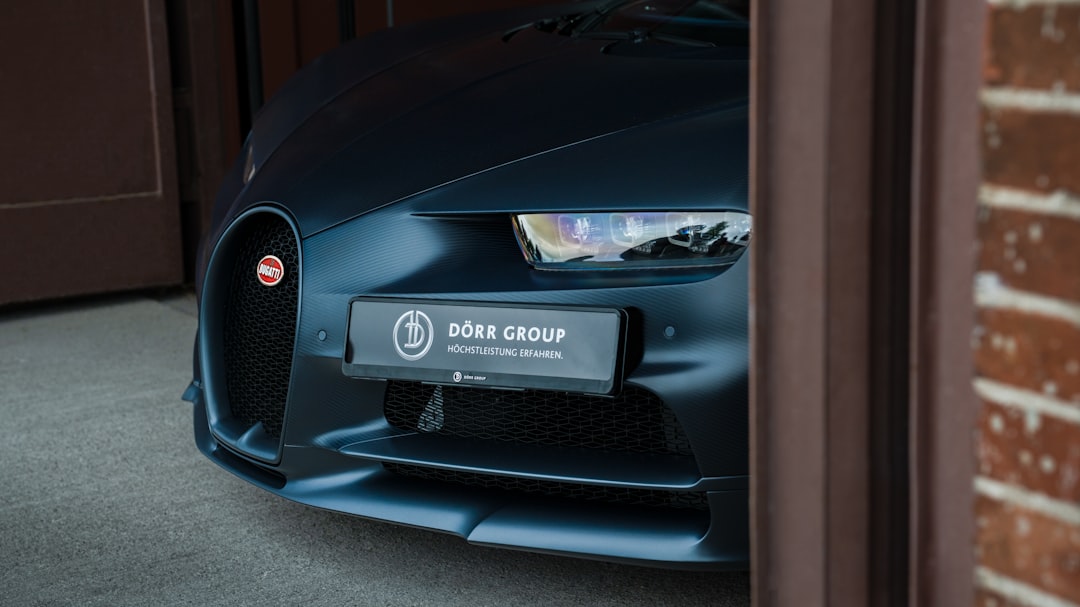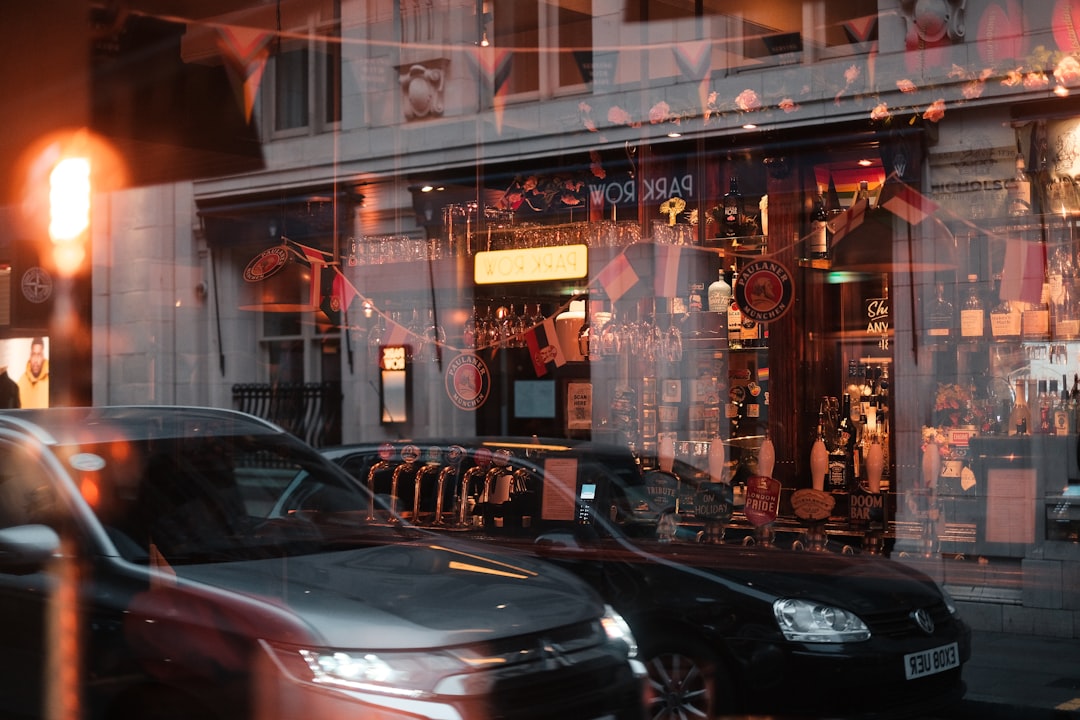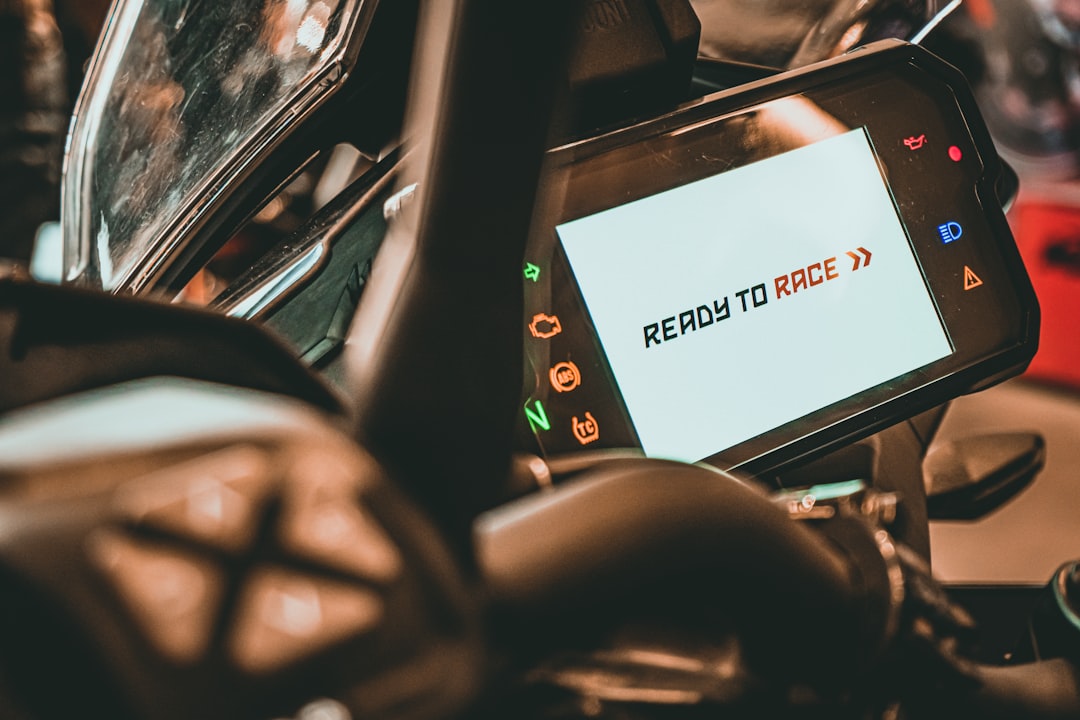

Engage prospects with a scan and streamline customer engagement with FREE QR code marketing tools by Sona – no strings attached!
Create a Free QR CodeFree consultation

No commitment

Engage prospects with a scan and streamline customer engagement with FREE QR code marketing tools by Sona – no strings attached!
Create a Free QR CodeFree consultation

No commitment
Car decal businesses are experiencing a surge in demand as brands seek creative ways to enhance business branding and personal expression. As options for custom car decals, QR code car magnets, and vinyl QR code stickers grow, standing out and driving measurable conversions from every interaction remains a persistent challenge. Many car decal providers still depend on static messaging, missing valuable opportunities for high-value prospects and actionable insights from these offline impressions.
Modern QR codes offer a transformative bridge for car decal businesses, connecting physical surfaces directly to dynamic online journeys via QR codes in marketing. When every scan can be attributed, tracked, and acted upon, businesses unlock new potential whether generating more leads, better tracking ad spend, or offering customers a seamless path from curiosity to purchase. QR code-enabled decals now make it possible to respond in real time, capturing prospects before competitors seize their attention.
This guide explores how car decal businesses can harness QR codes to close the gap between physical branding and digital engagement, streamline everyday workflows, and target the right audience at the right moment. With the right strategies and supporting tools, turning offline interest into measurable business outcomes becomes practical and repeatable.

Car decal companies often struggle to quantify the results of traditional advertising, as outlined in Sona’s blog post titled The Essential Guide to Offline Attribution, or to act quickly on high-intent interactions. QR codes bridge the gap between physical touchpoints like branded magnets or vinyl stickers and digital outcomes, making it easier to capture opportunities that would otherwise slip through the cracks. By embedding a clear call to action into eye-catching designs, each vehicle becomes a mobile conversion surface that moves prospects from interest to action in seconds.
To do this well, replace analog interactions and guesswork with digital triggers and measurable steps. For example, instead of sending prospects to a generic homepage, route scans to a mobile-optimized quote form with three fields and a preloaded product selection. Instead of handing out paper brochures at events, distribute QR-enabled magnets that drive to a promo landing page and auto-add scanners to a follow-up sequence. You eliminate friction, you capture data, and you can nurture interest while it is fresh.
By integrating these steps and modern tools into your process, every QR-enabled decal becomes a conversion engine that automates lead capture and nurtures interest without additional manual effort. Platforms like Sona QR support dynamic code management, analytics, and CRM sync, which makes results repeatable and simplifies reporting on what placements and messages deliver the most revenue.

A recurring challenge in the car decal space is the disconnection between offline exposure and online conversion. Business owners invest in eye-catching fleet graphics and attractive magnets, but often cannot tell which prospect noticed, scanned, or ultimately inquired. The result is a sea of unknown interactions and missed follow-up, which limits growth and muddies attribution.
QR codes directly address these hurdles by making every physical impression measurable and actionable. With one scan, prospects can request quotes, view galleries, or join a referral program. With dynamic codes, you can update destinations without reprinting assets, which preserves budget and keeps campaigns relevant.
When you can attribute scans to revenue outcomes, you can allocate resources with confidence, improve campaign timing, and iterate toward higher conversion rates. That insight creates a durable advantage over providers who still rely on static signage and guesswork.

Different moments call for different QR code experiences. Car decal firms operate across scenarios like trade shows, neighborhood installations, and B2B fleet projects, which means the ideal QR format should align with each touchpoint’s intent. Choosing the right formats up front makes the difference between generic traffic and qualified, trackable leads.
Below are the most valuable options for this industry, along with where they shine:
Some retailers and installers also place Wi-Fi QR codes inside showrooms or installation bays to speed up reviews and survey submissions while customers wait. With Sona QR or a similar platform, you can manage all these formats centrally, rotate destinations as your campaigns evolve, and analyze which formats perform best in each context.

Many decal businesses depend on word of mouth or walk-ins, which caps growth and limits data collection. The fastest path to scale is turning everyday exposure into active, measurable demand by placing QR codes wherever attention is earned. When you use the right placements, your vehicles, packaging, and retail environment become always-on lead sources.
Think about where your brand already appears and how people interact in those moments. Prioritize placements that make it simple to scan without disrupting the environment, and match the destination to the likely intent of the viewer.
Map these placements to a clear tagging strategy so you can attribute performance to vehicles, locations, and campaign types. Over time you will know which routes, events, and messages produce the best leads, and you can shift budget to the highest return opportunities.

Physical-to-digital conversion breaks down when companies cannot identify who engaged or what they wanted. QR codes solve that by transforming casual encounters into actionable signals tied to specific use cases. Each code should have a purpose, a promise, and a destination that fits the moment.
Here are three high-impact use cases to consider:
Match each use case to a specific segment and call to action. For example, a fleet manager scanning a service van needs a tailored B2B quote experience, while a DIY customer scanning a packaging sticker may respond better to a reorder coupon or installation video library.
Each QR scan carries context that can power your retargeting. Where did it happen, what was the offer, what device was used, and how many times did they return. When you deploy multiple codes across the journey, you can create segmented audiences based on real behavior and respond with messaging that fits their stage and interest. For a tactical framework, see Sona’s Playbook titled Intent-Driven Retargeting: Driving High-Impact Campaigns with First-Party Intent Signals.
For car decal providers, audience distinctions often include personal customization buyers, small business owners, and fleet decision makers. You might also separate new prospects from existing customers who are scanning to reorder, refer, or leave feedback. The richer your tags, the more relevant your next touch.
With a platform like Sona QR, you can automate these workflows so that each QR serves as a smart entry point into your funnel. You move beyond assumptions to campaigns that are driven by intent signals captured in the wild, which improves relevance and boosts ROI.
Disconnected channels make it hard to know what works. QR codes act as the connective tissue that unifies print, in-person, and digital marketing for car decal businesses. They shorten the path to action, and they unlock data from media that once looked dark.
The key is to design your QR ecosystem so that each channel supports the next. Let a mailer lead to a gallery, let the gallery prompt a quote, and let the quote flow trigger a friendly follow-up. Then use analytics to see which touchpoints move prospects forward.
Centralize code creation, routing, and analytics to avoid duplication and ensure accurate attribution. Sona QR provides a single dashboard for code management, performance monitoring, and CRM sync, which helps you keep the entire mix coordinated.
Streamlining execution while avoiding missed data and late follow-up requires a simple, repeatable process. Use the steps below to launch quickly, learn fast, and scale what works.
Clarify what outcome you want. For car decal businesses, common goals include generating quote requests at a local car meet, converting trade show interest into booked consultations, or capturing post-install reviews to improve search rankings. The use case you choose determines what you print, where you place it, and what the destination should be.
Tie each use case to a single, clear action. For example, Scan to get a free mockup for your food truck sets the expectation and helps you measure success. Resist the urge to link to a generic homepage, and send scanners to a focused landing experience instead.
Decide whether the destination will remain fixed or will need to change. Static codes work for evergreen content such as a permanent gallery or a PDF brochure. Dynamic codes are better for campaigns that require analytics, A/B testing, and destination updates without reprinting.
In most revenue-focused deployments, dynamic codes are the smarter default. They allow you to attach UTM parameters, rotate offers based on season, and tie scan events to CRM contact records. A platform like Sona QR gives you the flexibility to start with one destination and switch later as you learn.
Design for distance, motion, and glare. Vehicles are scanned from a variety of angles and lighting conditions, so prioritize contrast, surround the code with adequate quiet space, and size the code for typical viewing distances. Add a clear visual frame and a compelling CTA such as Scan for 10% off your first wrap.
Test before deployment. Check scannability on iOS and Android, different camera apps, and multiple devices. Test while the vehicle is stationary and in motion, and under sunlight and shade. If you discover weak performance in specific conditions, adjust size, contrast, or placement accordingly.
Match placement to behavior. Place larger codes on rear panels or windows where traffic idles at lights, and smaller codes near doors or handles for walk-up scans. Extend the campaign to packaging, installation bays, and showroom signage so customers encounter the same offer across touchpoints.
If you work events, add QR codes to booth backdrops, handouts, and giveaway magnets. For neighborhoods and local routes, deploy mailers with matching QR codes that reinforce the same message. Use unique codes per channel to attribute results accurately.
Measure scan volume, scan-to-lead rate, and downstream outcomes such as booked consultations and closed deals. Review performance by vehicle, route, event, and time of day. Look for patterns in device type and location that reveal ideal placement and timing windows.
Use your analytics to iterate. A/B test different CTAs, landing page designs, and offers. Rotate creative by season and segment. With Sona QR, tie scans to CRM contacts so your sales team can prioritize leads with repeated scans or high-intent actions, and you can prove impact with closed-loop attribution.
Proving ROI from vehicle graphics, magnets, or stickers has historically been difficult. Basic scan counts help, yet they do not reveal who scanned, what they wanted, or whether a sale followed. Without end-to-end visibility, it is hard to justify spend or improve performance over time. For modeling approaches, see Sona’s blog post titled Single vs Multi-Touch Attribution Models.
Advanced QR analytics solve this by connecting scans to contacts, campaigns, and revenue. When each scan event enriches a lead record and triggers smart follow-up, you can respond with precision while intent is high. Over time you can also learn which routes, placements, and offers lead to sales, not just clicks.
Sona QR makes these analytics actionable by capturing device, time, and location details, and Sona.com extends the view with identity resolution and multi-touch attribution. Together they unify offline scans with website visits, ad clicks, email engagement, and CRM activity, so you can map progression from first scan to purchase and understand how each touch contributed to revenue.
Even well-designed campaigns can underperform if placements are not measured, calls to action are vague, or follow-up is not automated. The following tips help you tighten execution and scale what works across your fleet and retail operations.
Choose the recommendations that match your most common media and customer journeys. If you specialize in B2B fleet work, prioritize attribution by route and rapid sales alerts. If you focus on consumer personalization, lean into loyalty, UGC, and reviews.
Small improvements in message clarity, visual hierarchy, and follow-up speed can yield significant gains in scan-to-lead and close rates. Document your learnings, standardize what works, and roll it out across all placements.
For car decal businesses, QR codes have evolved from novelty to necessary. They convert every vehicle, magnet, and sticker into a gateway to your digital funnel, solving persistent barriers such as missed leads, fuzzy attribution, slow follow-up, and generic messaging. When you meet customers where they are, on the street or in your shop, and give them a one-scan path to value, conversion rates rise and revenue becomes more predictable.
The advantage compounds when QR activity fuels audience building, ad targeting, and CRM workflows. You not only capture more demand at the moment of interest, you also learn which placements, offers, and routes pay back fastest. With Sona QR for code management and analytics, and Sona.com for identity resolution and revenue attribution, you can connect scans to outcomes and make QR a core pillar of growth. Start creating QR codes for free.
QR codes have transformed car decal businesses from simple decoration providers into dynamic marketing powerhouses. Whether it’s attracting new customers, enhancing the buying experience, or tracking which designs and placements drive the most engagement, QR codes turn every decal into an interactive, measurable asset. Imagine instantly knowing which car decals generate leads and sales—and being able to optimize your campaigns on the fly.
With Sona QR, you can create dynamic, trackable QR codes tailored to your car decal campaigns in seconds. Update your promotions instantly without reprinting decals, monitor real-time scan data, and connect every interaction directly to revenue growth. No more guesswork or missed opportunities—just smarter, more profitable marketing for your business.
Start for free with Sona QR today and transform every car decal into a conversion-driving tool that accelerates your success.
Businesses like Sona QR offer platforms that support dynamic QR code management, analytics, and CRM integration, making them ideal for custom QR code car decals.
Choose a business that provides dynamic QR codes, advanced tracking and analytics, CRM sync, and supports multi-channel marketing to ensure measurable and adaptable campaigns.
Common materials include vinyl for stickers and magnets, with options like eco-friendly vinyl also available for QR code decals.
QR-enabled decals and magnets are generally cost-effective and scalable, suitable for various budgets without requiring high media spend.
QR code car decals turn physical branding into measurable digital engagement, enable real-time updates, improve lead tracking and follow-up, and enhance conversion rates while providing valuable analytics.
Use Sona QR's trackable codes to improve customer acquisition and engagement today.
Create Your FREE Trackable QR Code in SecondsJoin results-focused teams combining Sona Platform automation with advanced Google Ads strategies to scale lead generation

Connect your existing CRM

Free Account Enrichment

No setup fees
No commitment required

Free consultation

Get a custom Google Ads roadmap for your business






Launch campaigns that generate qualified leads in 30 days or less.
